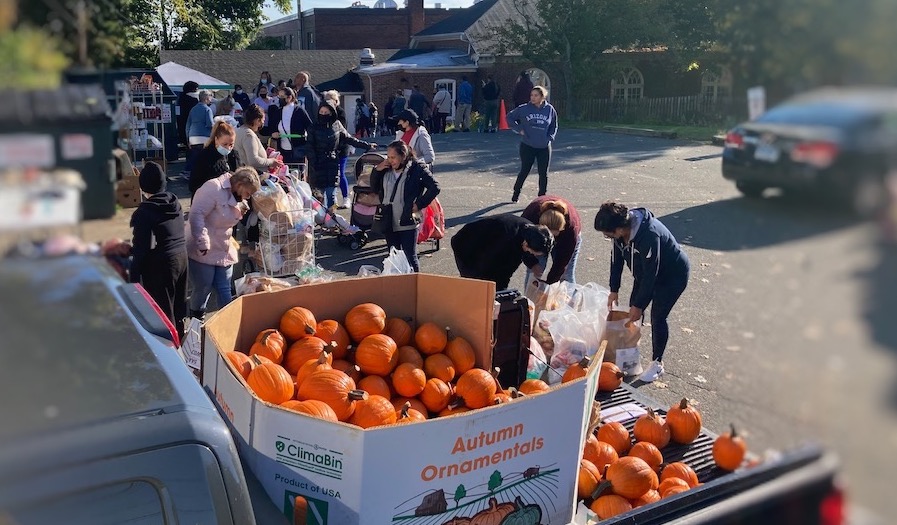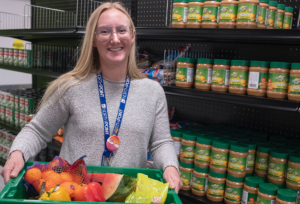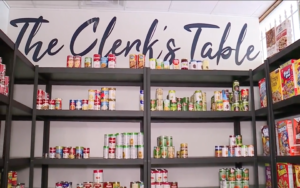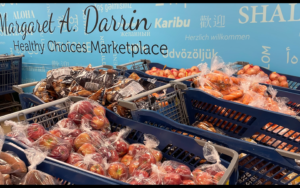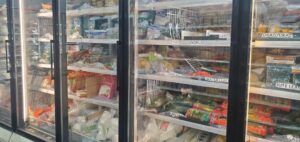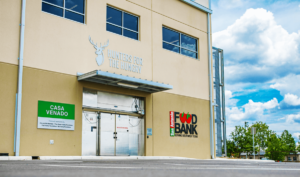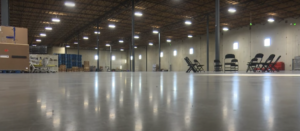Before the pandemic, Laguna Food Pantry in Calif., distributed food through a “charming” grocery-store-style pantry where clients could pick and choose the food they wanted, said Executive Director Anne Belyea. Then the pandemic hit, and it adopted the approach of many pantries in switching to a drive-through distribution with pre-packaged bags.
The impact has been lasting. “We will never go back inside,” Belyea said. “We really won’t.”
The dignity of client choice may be the gold standard of charitable food distribution, but it’s coming up against the reality that grab-n-go and drive-through distributions offer time-savings and convenience for clients, while enabling pantries to serve far more people in a shorter amount of time. With inflation causing visits to food pantries to remain just as high if not higher than during Covid, pantries from California to Connecticut are finding good reason to sacrifice some of the choice they had previously built into their distributions.
The need to deal with higher volumes of clients is a big motivation. Laguna Food Pantry has settled into serving between 150 and 250 households a day, Monday through Friday, in a two-and-a-half-hour distribution window, up from 80 to100 a day previously. With a drive-through distribution, the pantry can meet the need in an efficient way, and clients need not worry about the limited parking, nor the hassle of toting toddlers and babies in and out of their cars.
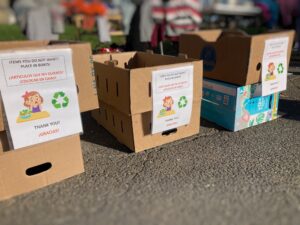
Recently, the pantry broke ground on a permanent carport-like structure to house the distributions, cementing the merits of its drive-through approach. The structure will replace a series of pop-up tents that volunteers currently erect and take down every day. “When we looked at demand and how well our program works with drive-through distribution, it just makes more sense,” Belyea said.
Daily Bread Food Pantry in Danbury, Conn. is also serving many more people now than before the pandemic. Its current grab-n-go set-up, which has the feel of an outdoor farmer’s market, can accommodate up to 250 guests in the same two-hour time period that it used to take to serve 65 indoors. Guests park their cars and file past outdoor tables where they receive three pre-packed bags, amounting to 45 pounds of food.
Executive Director Peter Kent is going for a fun, festive atmosphere. With enthusiastic volunteers and background music, the distributions are upbeat and sociable in a way that’s not possible in indoor mode. “We can create a good experience in a whole variety of ways that don’t necessarily mean a rigid adherence to a shopping model,” Kent said.
Even with streamlined distributions, pantries are finding ways to mix in elements of choice. Laguna Food Pantry, for example, offers produce-only or no-pork boxes, as well as the ability to choose from an “extras” table once the food has been loaded into the car.
Clients of Daily Bread also have a chance to discard items they do not want at boxes located at the end of the distribution line, giving them the option of rejection. “We get a good chunk of stuff back, and we also get feedback on what is not working,” Kent said. “We make a lot of purchasing decisions based on that.”
In Kent’s view, “client choice” includes the way clients choose to receive their food. He recently updated Daily Bread’s home page to emphasize the pantry’s three modes of distribution – the twice-weekly outdoor farmer’s markets; home deliveries, and pre-booked appointments for indoor shopping for seniors. An online system lets guests over 60 years old make a reservation to shop the pantry in person, while receiving personalized service from a volunteer. (This method accommodates only about 20 people in two hours, he noted.)
There may be no bigger proponent of choice than West Side Campaign Against Hunger, which pioneered the concept in the early 1990s. But its original iteration of choice – a small, basement-level, grocery-store-style pantry – is no longer practical as the organization seeks to address rising food needs throughout New York City in a much bigger way.
Since the beginning of the pandemic, WSCAH has accelerated its work of reaching out to groups that have long served the community, but had not previously distributed food. Now it has about 30 such community partners, which rely on WSCAH to source large amounts of fresh and healthy food, and distribute it in a way that does not require a lot of space, staffing or refrigeration. Pre-packaged bags are key to making these citywide grab-and-go distributions work.
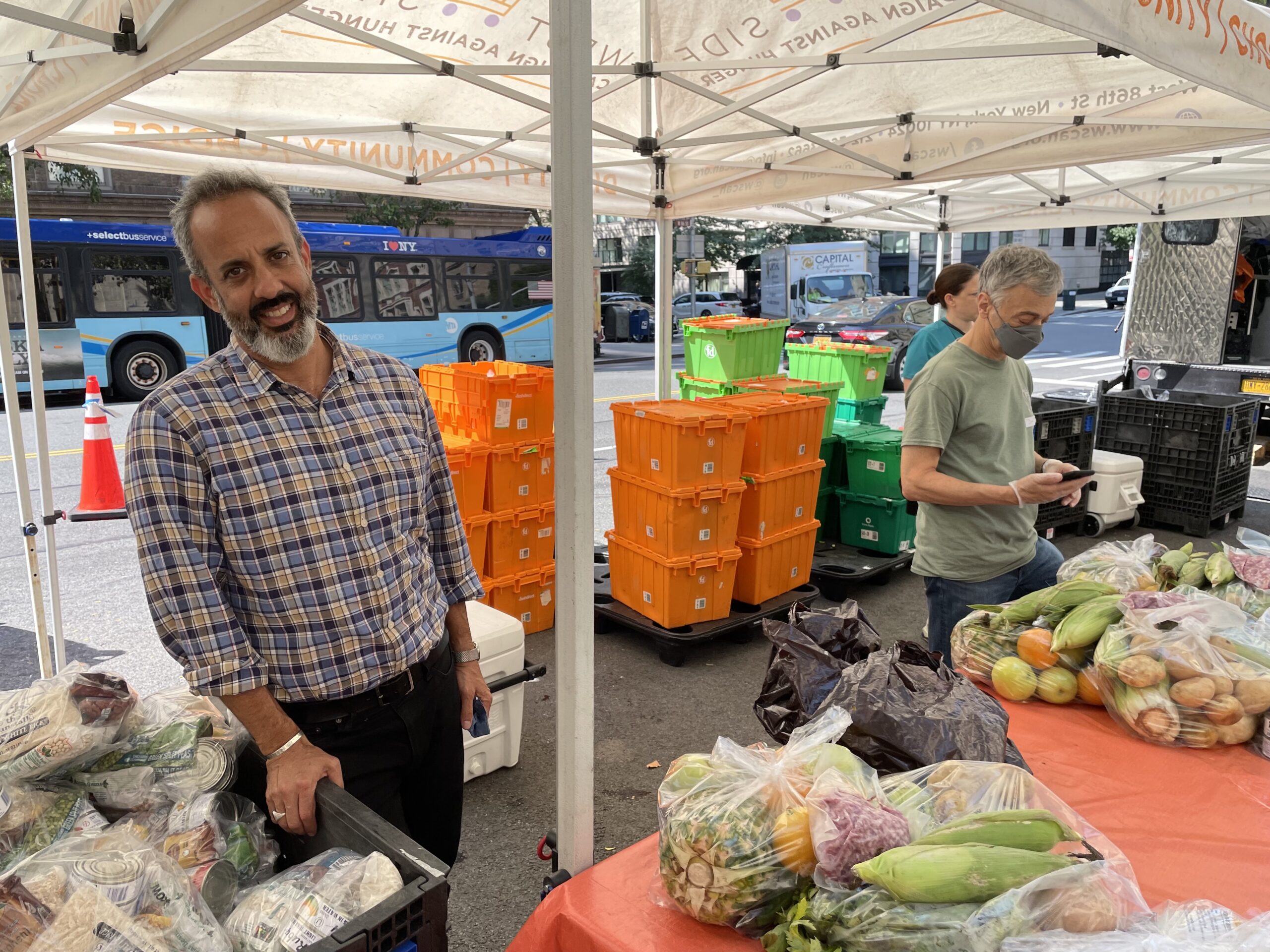
Currently, the space that used to house WSCAH’s client-choice pantry is being used to pre-package the bags. Soon, the operation will move to a new 13,000 square-foot warehouse that will let WSCAH significantly up its game in preparing pre-packaged healthy food bags on behalf of community groups around the city.
“We’ve found that workforce development groups, housing organizations, larger churches have capacity, but they don’t want to do food, and they shouldn’t do food,” said Greg Silverman, CEO and Executive Director of WSCAH. “Let us step in and be partners. That’s been a powerful approach for us.”
In its vision of the future, WSCAH’s indoor pantry is not likely to play a big role. While WSCAH still serves clients at its NYC Upper West Side location, distributions happen outdoors with grab-n-go bags and limited choice, allowing it to serve many more people and without routing them down an awkward outdoor staircase.
Ultimately, WSCAH is working toward high-tech choice via an initiative called the Digital Choice Project. Clients will use a texting platform to choose from a variety of foods and then get a customized box delivered to their door or neighborhood. At the moment, WSCAH is working with three community groups to test a choice of four boxes.
Even as a growing number of pantries move away from indoor choose-what-you-want shopping, there remains plenty of momentum toward letting clients peruse and pick pantry selections at their own pace. Today’s Harvest in Minn. and FISH of Wash., are just two examples of pantries that are fielding incredibly positive responses to their moves to grocery-store style shopping.
But it’s clear that the concept of choice also has the potential to stretch and morph. “People seem to like what we’re doing based on the traffic,” noted Kent of Daily Bread. “That’s got to count for something.” – Chris Costanzo
PHOTO, TOP: Clients can pick a pumpkin at the outdoor food distribution of Daily Bread Food Pantry in Danbury, Conn.
Like what you’re reading?
Support Food Bank News
